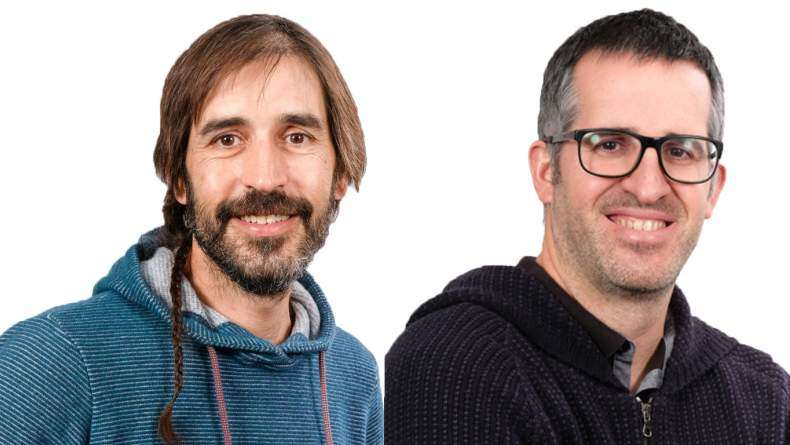Fortnightly seminars online: Hierarchical Framework Materials for CO2 capture by Nagore Barroso & Hybrid nanoparticles for the removal of pollutants through plasmonic photocatalysis by Fang Zheng

Hierarchical Framework Materials for CO2 capture. Nagore Barroso
Hierarchical organization is a basic principle found in many systems. The human body, in fact, is a classic example of hierarchical organization. At the lowest level, simple molecular building blocks, such as amino acids or lipids, create 3D biomolecular machines able to perform complex tasks. These molecular components are then organized into subcellular and cellular compartments or domains. These subcellular and cellular compartments are then structured into different organs and organ systems, which ultimately, at the highest level, constitute the entire organism. This structural hierarchy can strongly influence bulk material properties.
However, the variety of materials we can create is still limited in their structural complexity as strategies for gaining hierarchical control of matter across all size regimes from molecules to macroscopic systems, have not yet been developed. The aim of this work is to overcome this barrier by synthesizing porous hierarchical framework materials (HFMs) and apply those materials for selective CO2 capture.
Hybrid nanoparticles for the removal of pollutants through plasmonic photocatalysis: Fang Zheng.
Photocatalysis is an attractive process to remove organic pollutants from aquatic environments, especially because it is inexpensive, presents low toxicity and can be carried out under ambient conditions. Among several catalysts, titanium dioxide (TiO2) is one of the most used photocatalysts due to its remarkable properties. However, it is limited by its large bandgap (≈ 3 eV), which results in poor efficiency upon visible light irradiation. To overcome this limitation, Au can be employed because its characteristic localised surface plasmon resonance band takes place in the visible region. Nevertheless, many works use spherical gold nanoparticles: limiting the spectral irradiation region in the 500-550 nm, and wasting a large part of visible radiation.
In this work, I present the new methods developed to obtain hybrid AuTiO2 nanoparticles that can expand the plasmonic absorption covering both visible and near IR regions.
The seminar will be held on Martina Casiano auditorium until complete de permitted capacity (6 people). It is important to follow the COVID rules (wear a mask, clean hands with sanitizer, keep distances between attendants) You can also follow it in streaming using TEAMS with the next link:
https://teams.microsoft.com/l/meetup-join/19%3ameeting_MTEzOTNmOTAtMmM5ZS00NGZlLWJiOGQtMTRhOWNjZDdlNzE1%40thread.v2/0?context=%7b%22Tid%22%3a%222f54ab68-83af-4d70-8895-a0d1e95ec899%22%2c%22Oid%22%3a%227778b4e1-e06d-485b-b530-cf013d4e9498%22%2c%22IsBroadcastMeeting%22%3atrue%7d
Related news
María Calles, BCMaterialseko doktore berria
María Calles García zoriondu nahi dugu UPV/EHUn Materialen Zientzia eta Teknologian doktoretza lortzeagatik. Abenduaren 4an Maríak ‘Chelating Metal-Organic Frameworks and Their Polymer-Composites…Bartzelonako Mikroelektronika Institutuko ikertzaileekin hitzaldi gonbidatua (abenduak 3)
Datorren abenduaren 3an, 12:00etatik aurrera Leioako Martina Casiano auditorioan, BCMaterialsek Bartzelonako Mikroelektronika Institutuko (IMB-CNM) (CSIC) Antón Guimerà eta Xavier Illa ikertzaile…Hitzaldi gonbidatua Liu Yaorekin metal-litiozko bateriei buruz (abenduak 2)
Datorren astelehenean, abenduaren 2an, Liu Yao Shanghai Institute of Applied Physics-eko irakasleak "Li Metal Batteries: From Liquid to Solid-State" hitzaldia aurkeztuko du BCMaterials-en. Hitzaldia…BCMaterials-en urteko workshoparen arrakasta, material kritikoei eskainia
BCMaterialsen urteko workshoparen 2025. edizio arrakastatsuak ehun bat lagun bildu zituen azaroaren 19an Leioan, artearen egoera aztertzeko eta material kritikoei, materialen aplikazio kritikoei eta…



